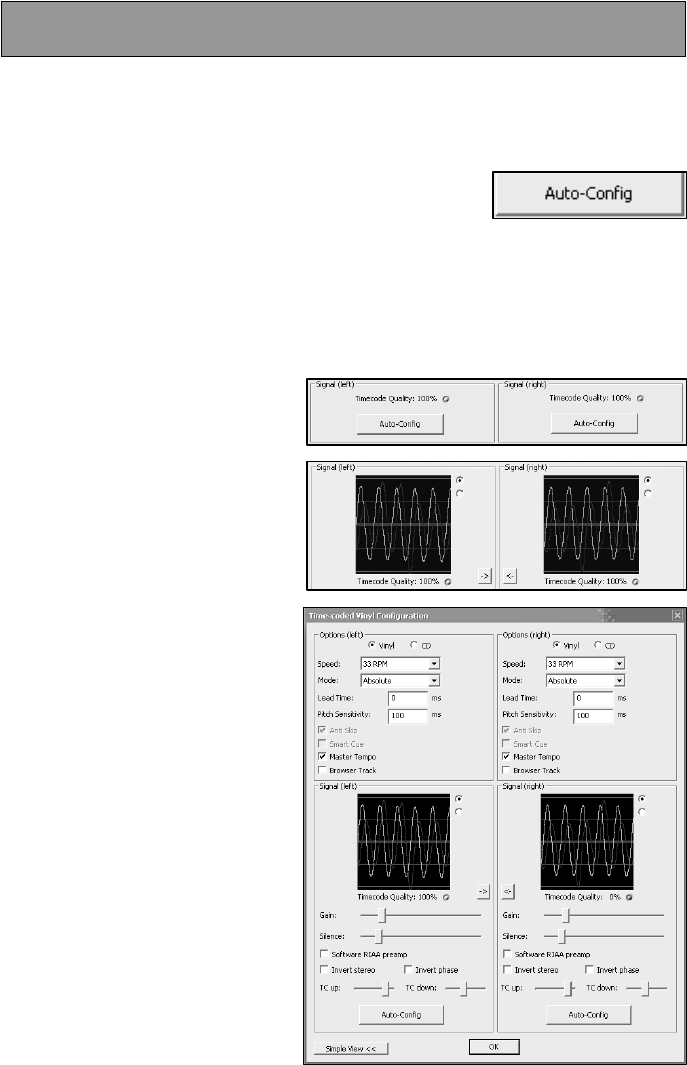
6
When you open the Timecode Configuration window, you can choose to view the window in
Simple or Advanced view. For the most part, you might never have to go into the Advanced
View – the Simple View shows the most essential timecode configuration that you will probably
need.
You will notice that there is an Auto-Config button for each virtual
deck. This button can be used to automatically detect the required
timecode settings for the software to function properly.
To use the Auto-config feature:
1. Play both timecode input sources (i.e. play both timecode CDs or play both timecode
vinyl).
2. In the software, press each deck’s Auto-Config button to automatically configure the
timecode settings.
If the timecode signal is configured
properly, you will see a green dot
next to Timecode Quality (as
shown on the right in Simple
View)…
Or you should see a nice Sine
wave pattern (as shown on the
right in Advance d View).
Please refer to the following
descriptions of the timecode
configuration parameters (shown
with Advanced View on the right):
1. Vinyl – Choose this option if you are
using timecoded vinyl.
2. CD – Choose this option if you are
using timecoded CDs.
3. Mode – You can choose between 3
different timecode tracking modes.
These modes will influence how the
timecode is controlling playback
position on the corresponding deck:
Absolute – This mode is similar to
how music is normally played on
vinyl. The beginning of the record
corresponds to the beginning of the
track and picking up the needle and
moving it to another location on the
vinyl, also known as needle
dropping, will move playback to that
location in the track. Please note
that in Absolute mode you will not be
able to use some of the software
features, such as looping and cue
points.
TIMECODE CONFIGURATION
